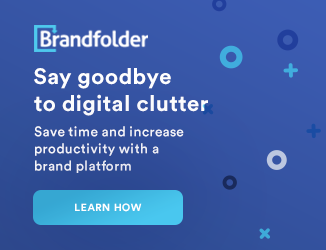The list of channels available to engage with your customers (and just as importantly, for them to engage with you) continues to grow. Long-standing platforms such as LinkedIn and Instagram remain relevant, while new platforms like TikTok have become places for brands to communicate with customers.
With more channels comes an expectation for more consistent content, and many marketers are finding themselves without the tools to stay abreast of these changes. Traditional Digital Asset Management (DAM) systems cannot deliver omnichannel content, when the nature of channels and the variety of content has changed so drastically since traditional DAM systems were rolled out.
The latest technology underpinning DAM changes the game by delivering an omnichannel solution for managing assets across all platforms, from websites and mobile apps to social media posts and many more. This allows content creators to establish a single platform to manage and distribute content variations for each channel.
The ABCs of DAM 1, 2 and 3
Before I start discussing the latest DAM technology platforms, let's explore the evolution of DAM and take a look at how it has matured over the last thirty years.
DAM 1.0
DAM 1.0 is the earliest form of DAM, primarily based on the idea of having a central, singular place for storing all your digital assets. The need for DAM emerged from the early days of desktop publishing, digital printing and advertising when the alternative was storing the physical files.
DAM 1.0 essentially functions as an asset library. People upload files for storage and download files when they need access. When working with one asset, you have to download it, make edits and then re-upload it to the DAM system when you have finished.
Due to this way of working, DAM 1.0 sat on the side as a stand-alone application and did not connect to other systems. It was somewhat of a flat-file approach using relational databases to link together single asset records. Many of these single stand-alone DAM systems still exist, but they cannot handle or manage modular content for automated delivery to downstream systems. Therefore, they cannot help you build an omnichannel content strategy.
DAM 2.0
The main difference between a DAM 1.0 and DAM 2.0 implementation is integration and automation of processes. Connecting your DAM platform to other systems can enrich search functionality in the DAM system and even trigger downstream processes. I often see DAM at this level leveraged within standard MarTech stacks and content creation workflows. It can integrate with other platforms, such as CRM, PIM and work collaboration systems, making it more of a backbone to processes than DAM 1.0.
DAM 2.0 connects upstream and downstream content, taking a digital asset from creation to production and then publishing. However, this is typically a one-way flow of rich assets (images and videos) to the distribution platforms of choice. These rich assets still need to be combined with text and other elements in the destination platform, such as a Web CMS. The technology underpinning DAM 2.0 stops it from using analytics and data to leverage the content in a dynamic, omnichannel and personalised manner.
DAM 3.0
DAM 3.0 is more than just the latest update to digital asset management solutions. An omnichannel content platform (OCP) solves the content challenges of DAM 1.0 and 2.0 by having the ability to become part of a data ecosystem delivering personalised customer experiences across channels.
OCPs are one method of removing silos from the content creation and management process. They often combine rich assets with other textural aspects like product and content marketing to allow you to curate and manage all aspects of the content in one place. An OCP will typically also combine Product Content Management (PCM), Marketing Resource Management (MRM) and Local Area Marketing (LAM).
DAM 3.0 enables modular content creation and distribution - an essential component when delivering omnichannel content. It also connects with your publishing platforms, integrating with Web CMS, apps and social media to facilitate omnichannel distribution. An OCP can augment the upstream data such as product information and make it available for marketing and tailored customer experiences via the integration of Customer Data Platforms.
Why traditional DAM cannot support omnichannel delivery
Traditional DAM software is often not the best solution for your omnichannel content strategy. While traditional DAM solutions serve their purpose as a single source of truth for rich assets, they lack the ability to deliver content dynamically that underpins modern customer expectations. Customers of your brand want personalised content, on the channel, and at the time of their choosing.
Organisations that have been sluggish in progressing their DAM technology have all experienced some degree of a content crisis in recent years. Their content is likely spread across systems and filestores as their DAM is not central to their business processes. Perhaps the approved image files are unsecured and inaccessible on the graphic designer's laptop hard drive or buried in email. The (thankfully) lost art of file hunting is still very much alive for these organisations that will continue struggling to meet increasing customer content demands and fail to meet modern customer expectations.
Older DAM systems do not support omnichannel distribution. If you want to distribute content on two social media platforms via traditional DAM, you might have to leverage two siloed systems that duplicate processes and workloads. These silos can increase the chance of brand inconsistencies, reduce the opportunity for collaboration, and they provide few opportunities for content re-use. Expand that out to more channels and it's a lot of duplicated and unproductive time wasted too.
Why do you need DAM 3.0 for your omnichannel content?
A DAM 3.0 platform has extensive features to support your omnichannel content strategy. It offers integrations with all your crucial channels, combining email marketing, website, ecommerce and social media. This enables you to easily upload content and files and publish them autonomously (with the right formats, fonts, and copy) on the channels of your choosing. This significantly reduces workload, processing time across channels and reduces errors and inconsistencies.
DAM 3.0 is one solution to solving your content crisis and meeting customer expectations with personalised content experiences. An OCP puts all the pieces of your content and systems together for your staff to efficiently and collaboratively deliver repeatable customer experiences and content across channels.
Creative Folks can implement DAM 3.0 in your business
At Creative Folks, we have been providing our customers with DAM solutions since its inception in the early 90s. This has provided us with a deep understanding of each stage of the content management journey, as we have helped customers progress through DAM 2.0 and onto an Omnichannel Content Platform integrated into their tech stack.
Creative Folks specialise in delivering content workflow solutions underpinned by DAM platforms and integrated to deliver omnichannel CX to support your content strategy. We work with world-leading content management technology providers like Sitecore and WoodWing to deliver tailored DAM and OCP solutions.
We are proudly a Gold partner of Sitecore, and we leverage their powerful Content Hub platform to deliver our local customers cutting edge OCP solutions. For more information on the OCP solutions we provide, please view our Digital Asset Management guide.



 Previous
Previous



